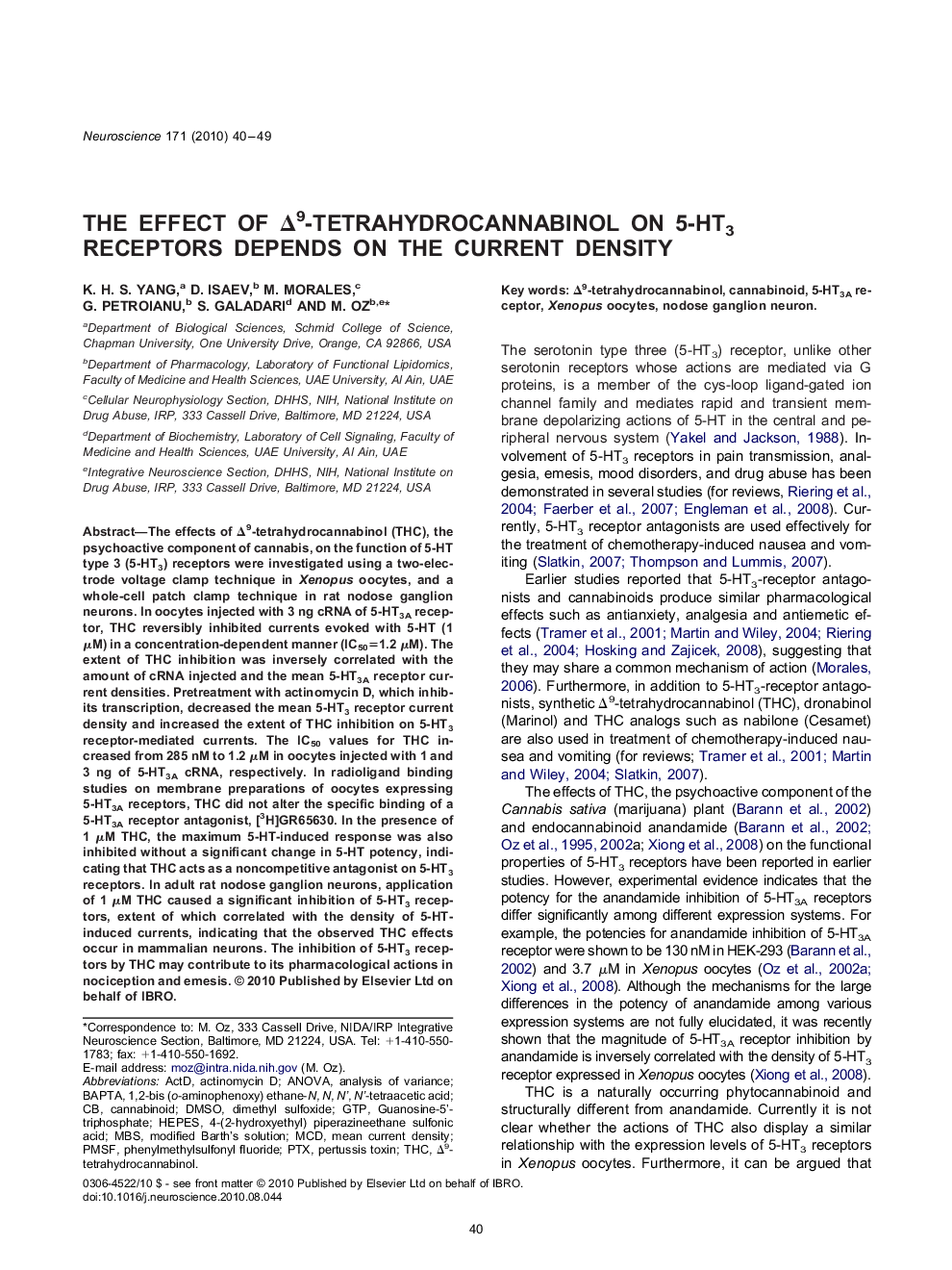| Article ID | Journal | Published Year | Pages | File Type |
|---|---|---|---|---|
| 4339287 | Neuroscience | 2010 | 10 Pages |
Abstract
The effects of Î9-tetrahydrocannabinol (THC), the psychoactive component of cannabis, on the function of 5-HT type 3 (5-HT3) receptors were investigated using a two-electrode voltage clamp technique in Xenopus oocytes, and a whole-cell patch clamp technique in rat nodose ganglion neurons. In oocytes injected with 3 ng cRNA of 5-HT3A receptor, THC reversibly inhibited currents evoked with 5-HT (1 μM) in a concentration-dependent manner (IC50=1.2 μM). The extent of THC inhibition was inversely correlated with the amount of cRNA injected and the mean 5-HT3A receptor current densities. Pretreatment with actinomycin D, which inhibits transcription, decreased the mean 5-HT3 receptor current density and increased the extent of THC inhibition on 5-HT3 receptor-mediated currents. The IC50 values for THC increased from 285 nM to 1.2 μM in oocytes injected with 1 and 3 ng of 5-HT3A cRNA, respectively. In radioligand binding studies on membrane preparations of oocytes expressing 5-HT3A receptors, THC did not alter the specific binding of a 5-HT3A receptor antagonist, [3H]GR65630. In the presence of 1 μM THC, the maximum 5-HT-induced response was also inhibited without a significant change in 5-HT potency, indicating that THC acts as a noncompetitive antagonist on 5-HT3 receptors. In adult rat nodose ganglion neurons, application of 1 μM THC caused a significant inhibition of 5-HT3 receptors, extent of which correlated with the density of 5-HT-induced currents, indicating that the observed THC effects occur in mammalian neurons. The inhibition of 5-HT3 receptors by THC may contribute to its pharmacological actions in nociception and emesis.
Keywords
Related Topics
Life Sciences
Neuroscience
Neuroscience (General)
Authors
K.H.S. Yang, D. Isaev, M. Morales, G. Petroianu, S. Galadari, M. Oz,
